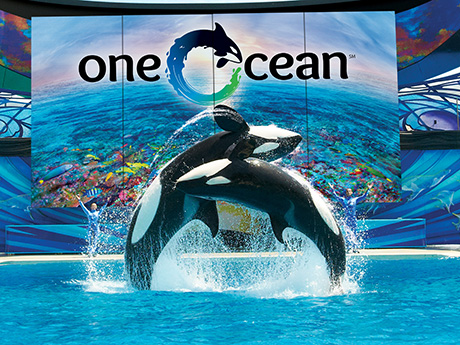
They’re so majestic, so smooth, so elegant. They are the masters of their medium, moving at remarkable speed, propelling themselves through the air, entertaining their audiences. The bond between these performers and their trainers can’t be described in words. If you have ever been to SeaWorld and seen the killer whale show, you probably would agree on the uniqueness of the performance and how the show is one of the main attractions. It’s so grand and the animals are so big that watching them do high dives, flips, and crowd splashing all while synchronized to music is a mesmerizing feat. I’m not alone on this being my favorite attraction; many other would agree. However, do these spectacular performances and artistry that trainers can create justify the fairly recent allegations about the poor living conditions of these animals?
In 2013, a documentary titled “Blackfish” was released, centered around a whale named Tilikum of SeaWorld Orlando who killed 3 people, 2 of which were trainers before he died due to bacterial infection at 35. The documentary focuses on his living conditions and how he developed this kind of aggressive behavior. A few of the big arguments from the documentary are (1) the lack of swimming space. Killer whales aren’t confined by boundaries while in the sea, so being confined to a pool limits the freedom that these animals usually have. Argument (2) is that Tilikum was constantly performing. They stated that at one point he was performing every hour, 8 times a day, 7 days a week. Also, they point out Tilikum’s collapsed fin indicating a sign of an unhealthy and stressed orca, something that is rarely seen in the wild. Aside from all these arguments, Tilikum did live for a good amount of time. According to the National Oceanic and Atmospheric Administration, male killer whales have an average lifespan of 30 years but can live up to 50-60 years. Tilikum died at age 35 which seems pretty good for an orca in captivity.
It’s hard to argue with these statements though and you have to wonder if the trainers at SeaWorld have always been aware of these issues. When you compare SeaWorld’s treatment of their animals to that of other places in the world, you could argue that they aren’t blatantly trying to torture their animals. Of course, we are still left with the question of, is how the present way SeaWorld is taking care of their killer whales justified enough to keep the performances no matter how spectacular the shows may be? I believe that is up to you to decide.
I definitely have mixed feelings. In my opinion, there aren’t distinct rules on the way animals should be treated. Some may say holding animals in captivity in an artificial habitat should already be a crime but others might not draw the line until an animal is involved in experimentation. Are there more justified crimes out there involving animals that should be handled first? Probably.
This year, SeaWorld San Diego decided to discontinue their shows and create a new, more informative exhibit with the killer whales, mimicking their natural lifestyle. You could argue that although the shows are gone, there isn’t a lack of natural beauty or art. It’s just that we can now admire the movement of these creatures through the water as an art in itself, more along the lines of what nature had in mind.





